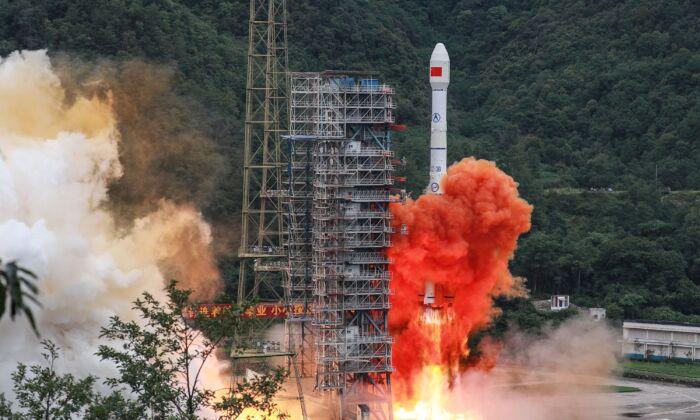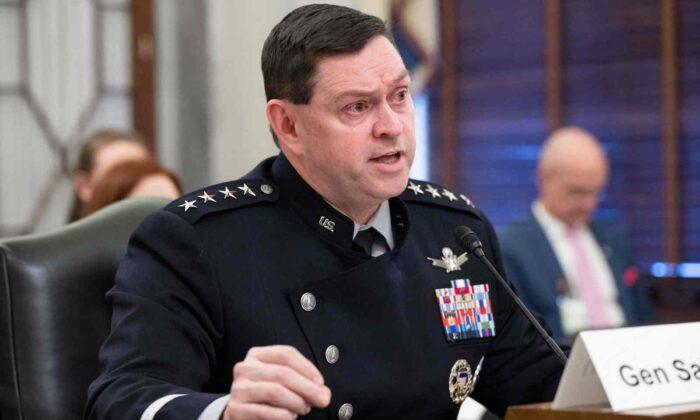Protecting U.S. satellites will be one of the major challenges in space warfare, according to top U.S. generals.
The primary threats come from potential first strikes by China and Russia, both of which have advanced space capabilities, Gen. B. Chance Saltzman, chief of space operations for the U.S. Space Force, told attendees at an April 5 forum on space defense.
Hostile Actors
While China seems to have the greater capability to conduct space warfare, Russia has demonstrated a willingness to attack space targets and remains an acute threat, according to Saltzman. Russia “is deploying asymmetric counter-space systems meant to neutralize American satellites,” he said.In the Ukraine war, Russia has jammed communications satellites and GPS systems. Though it has stopped short of attacking the satellites themselves, both Russia and China have the capability to do so, said Saltzman.
“Both have a range of operational counter-space capabilities, including terrestrial lasers to disrupt and degrade satellite sensors, electronic warfare jammers, targeting GPS and satellite communications, as well as anti-satellite missiles,” Saltzman said.
“Both are working to use space for their own military purposes.”

China’s more advanced missile technology is alarming to Air Force Lt. Gen. DeAnna M. Burt, deputy chief of space operations for cyber and nuclear.
“Even more scary to me is the July 2021 launch of their first fractional orbital launch vehicle, which starts out as an ICBM, and then maneuvered an end game as a hyper-glide vehicle,” Burt told the audience.
Floating Debris
Warfighting in space would be further complicated by the ballooning volume of objects orbiting the Earth, according to Saltzman.Last year alone, various entities conducted 177 space launches that put 2,215 payloads into orbit, he said.
That alone creates a challenge for Space Delta 2, the unit responsible for tracking potentially dangerous objects in space. The unit is currently tracking some 48,000 objects, just 7,100 of which are in active use. The rest are space junk that complicates the tasks of space defense.
“These numbers also include expended rocket bodies, inactive satellites, uncooperative payloads, and debris which further congest and complicate our understanding of the environment,” Saltzman said.
The International Space Station (ISS) reported 1,286 “close approach events” with these objects in 2022, a 233 percent increase from 2022. The ISS had to maneuver around these objects twice last year.
“The increase was largely due to the Russian anti-satellite test in November 2021, which created at least 1,500 pieces of trackable debris,” Saltzman said.

Countering the Threat
To counter the potential threats to U.S. satellite capability, the military must build resiliency into its satellite systems, both generals said.That means having an adaptable array of satellites in low earth, medium earth, and geosynchronous earth orbit in order to avoid being debilitated by a potential first strike.
“To reduce the current first-mover advantage in space, our satellite constellations are shifting to be more proliferated, disaggregated, and distributed,” Saltzman said.
“Just this week, our Space Development Agency conducted the first launch of its new proliferated warfighter space architecture. This first set of 10 satellites begins to build out the transport and tracking layers,” Saltzman said, noting that the entire system was developed and deployed in just 27 months.
Other adjustments to the Space Force’s strategy include closer cooperation with civilian partners and real-life training exercises that simulate the tactics and decision making needed by operators of the equipment.
Saltzman said he hopes to “unleash the spirit of creativity, innovation, determination, and patriotism” among Space Force personnel, who are called guardians. This will be critical, the general said, because solving complex problems is a primary requirement for protecting the country’s assets in space.





